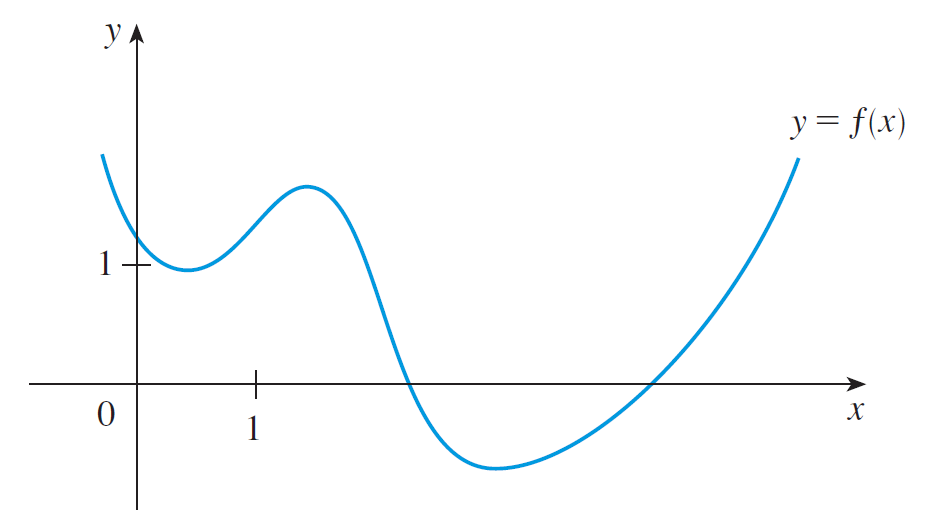2.2: The Derivative as a Function
Recall the definition of a derivative at $x = a$:
If we let $a$ be any number in the domain of $f(x)$, we can think of the derivative as a function:
Functions you know about look like $f(x) = x + 1$, where it has a input-output structure.
Both input and output are real numbers.
Because the derivative is a function, the input is a function and the output is also a function!
 Sketch the derivative.
Sketch the derivative.
Differentiability
If you let $y = f(x)$, the derivative has many different notations: \[f'(x) = y' = \dfrac{dy}{dx} = \dfrac{d}{dx} f(x) = Df(x) = D_xf(x)\]
There are three cases when $f'(x)$ does not exist.

How are differentiability and continuity related?
The reason why this is true (often called a mathematical proof) is in the textbook (page 122); we will omit it here.
Higher-Order Derivatives
If $f(x)$ is a function, $f'(x)$ is also a function.
$f'(x)$ might have a derivative of it's own!
To find the second derivative, first find $f'(x)$, then find the derivative of $f'(x)$.
In general, this extends to the $n$th derivative. Here are common notations for multiple derivatives:
- $f'(x), f''(x), f'''(x), \cdots, f^{(n)}(x)$
- $D_xf(x), D^2_xf(x), D^3_xf(x), \cdots, D^{(n)}_xf(x)$
- $y', y'', y''', \cdots, y^{(n)}$
- $\dfrac{dy}{dx}, \dfrac{d^2y}{dx^2}, \dfrac{d^3y}{dx^3}, \cdots, \dfrac{d^ny}{dx^n}$
The last notation is called Leibniz notation.
We can interpret the second derivative as the rate of change of a rate of change.
A familiar example of a second derivative is acceleration.
If you have a position function $s(t)$, then we saw $v(t) = s'(t)$ is the velocity.
The rate of change of velocity is acceleration, or in symbols: \[a(t) = v'(t) = s''(t)\]